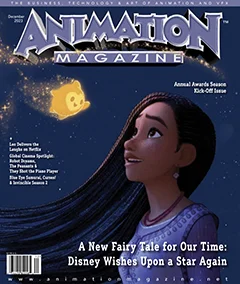|
Getting your Trinity Audio player ready...
|
A few thoughts on embracing or shying away from AI.

Navigating the world of animation these days feels a bit like stepping into a sci-fi movie, complete with all its awe and apprehension. Artificial Intelligence is everywhere, and it’s got people talking about all of the ways that it can revolutionize the way we create. But, alas, in many of the sci-fi flicks that I have seen, the new super technology usually ‘escapes the machine’ and tries to eliminate humanity as we know it. Trust me, as someone who started out as a traditional artist with pencil and paper, toiling for years to improve my craft, seeing a machine create art in a blink is very similar to watching the T-1000 shapeshift to get into a locked room in Terminator 2. Jarring, to say the least!
To be clear, AI presents both opportunities and challenges. It has the capability to produce work that closely mimics the craftsmanship of a seasoned artist. And, sure, it can be the ultimate “copycat” if used unethically. Big studios could go all-in with AI, leading some to fear a rise in the unemployment rate faster than you can prompt ChatGPT to write a term paper.
Haven’t we seen this movie before? Cue the flashback to the mid-2000s, when the animation industry was transitioning from traditional pen and paper to digital animation. Everybody was on edge. There were similar concerns about job security and quality at the time, with many wondering if these new tools — or the less experienced people who had access to them — were ready for primetime. But the end credits told a different story. We didn’t just survive; we thrived. The animation industry expanded, leading to the creation of new animation houses specializing in digital animation, as well as an increase in the number of projects produced due to the reduction in cost. Also, more creators have gotten to contribute their talents.
‘With advanced tools like Stable Diffusion and Claude AI becoming increasingly accessible, the proverbial Pandora’s box is not just open — it’s been open-sourced. There’s no turning back now.’
So, could AI be the sequel we didn’t know we needed? From my vantage-point, it’s scary, but promising. It’s still the first act, but with the speed of innovation that we are witnessing, it won’t be long until the tools become very useful. At our studio, we have already been impacted. In one of our recent projects, using Adobe’s generative fill helped us instantly revise a set of production art background paintings that would have normally taken over two weeks. That’s two extra weeks for creative refinement, which is worth more than gold in our industry.
But it can’t be that easy, can it? Well, the fear of job loss isn’t baseless. Reports are already emerging that some of the largest studios are establishing specialized ‘task forces’ to integrate AI for the purpose of cutting costs. This could very well lead to a reduction in the workforce, which is a concerning development. However, it’s important to recognize that technological advancements often create new roles even as they make others less essential. Take the rise of YouTube, for example. This platform has given birth to a new category of content creators, working in formats we never before envisioned. These small creators are now competing with some of the largest broadcasters and studios for viewers’ attention, all from the comfort of their own bedrooms. In a similar vein, AI could likely spawn professions and creative avenues that we can’t yet anticipate.
Additionally, with advanced tools like Stable Diffusion and Claude AI becoming increasingly accessible, the proverbial Pandora’s box is not just open — it’s been open-sourced. There’s no turning back now. The undeniable reality is that AI is here, bringing both transformative potential and ethical considerations with it. We are at a crossroads: we can either embrace AI to enhance our artistic capabilities and tap into unprecedented creative possibilities, or we can shy away, leaving the field open for large studios to monopolize these advantages. Faced with these alternatives, my preference is clear: let’s harness this technology to amplify, rather than replace, our human skills. For my team and me, the decision is easy. We choose to be proactive, contributing to shape the future of AI in a way that enriches the world of animation and media production for the better.
Carl Reed is the CCO and president of Lion Forge Animation and CEO of Composition Media. His career includes 20 years in media creation. Over the course of his career, Carl has worked with high-profile clients to produce a variety of different types of content, from comic books to broadcast animated series, toys and video games.





 Win a Funko X Lilo & Stitch Prize Pack!
Win a Funko X Lilo & Stitch Prize Pack! 
